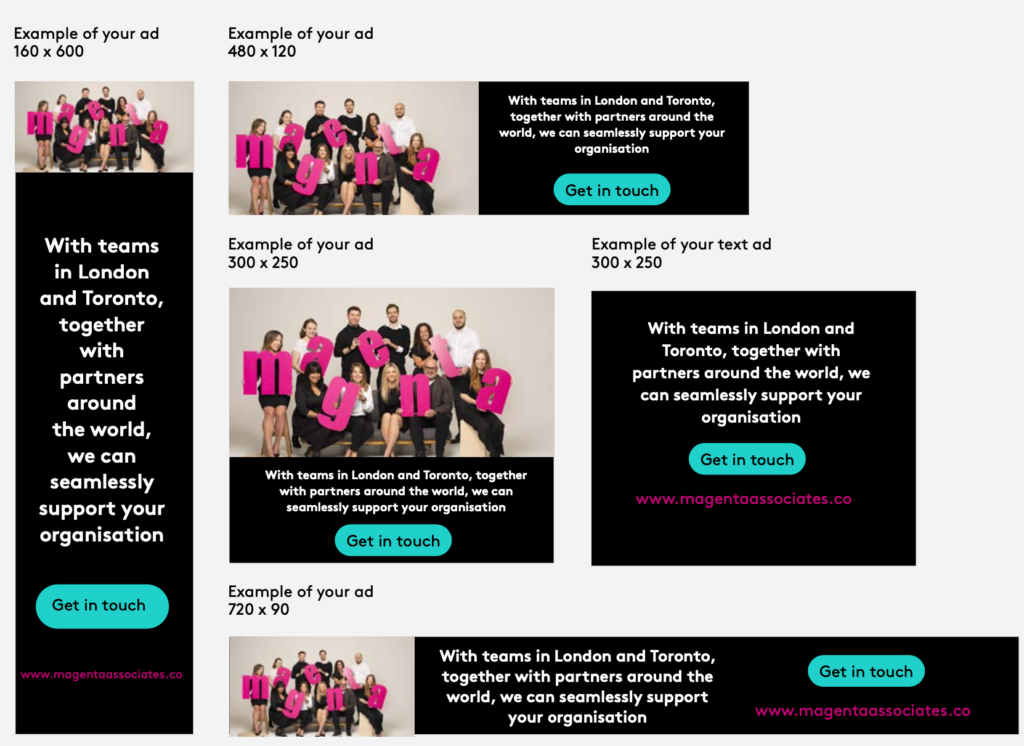Paid media is an effective method for promoting content and driving exposure. It can be a fantastic way to expand your reach as a company, particularly if you’re a small or new businesses looking to build an audience, or help your business overtake competitors by funnelling more of the demand to your business and away from theirs. It has become an effective strategy for better targeting and control of who is seeing your content.
What is paid media?
Paid media is advertising in a traditional sense because it requires the purchase of ad space. Common paid media includes:
- Display or banner advertising
- Search engine marketing (SEM)
- Paid for social media promotion
- Pay-to-play articles (also known as sponsored or native content)
Display advertisements

Whenever you browse the internet, you will come across countless display ads. These boxes appear on websites and social media, framing the content that your potential consumers will be using throughout their day. Their position on the page will depend on the type of advert.
Traditional banner ads appear at the top of a webpage above the content. Display ads can offer value across the entire customer journey. However, the style and content of the ads may vary depending on their target audience.
Typically, display ads are used for low cost-per-click top-of-funnel marketing campaigns that reach large volumes of your target audience. This is a great way to populate your retargeting lists for more bottom-of-funnel marketing, especially if your website is not attracting much organic or referral traffic.
Paid social media
Like display ads, paid social posts have the potential to expand your reach as an organisation beyond your current fans and followers. They allow great reach to target audience segments, offer retargeting options to recover interested parties to your website, and can complement regular posts.
A big differentiator between social media ads and display ads is the audience data. Social media ads target specific audiences based on their network, hobbies and interests, professions and even relationship status. As a result, social ads can get your message to your intended audience quickly and effectively.
Running a paid media campaign
Above all, remember that the online environment is always evolving, and your audience will evolve with it. Digital marketing is an opportunity to try new ideas and experiment with what works. A/B testing and creative problem solving can be applied throughout the process and should be part of your company’s brand development.
In our latest free Magenta guide, we look at how to make paid media part of your marketing strategy.
Marketing and communications support
Whether you need a bespoke communications strategy or support in creating engaging material to deliver a strategy you’ve already produced, we can help. With teams in Brighton, London and Toronto, together with partners around the world, we can seamlessly support your organisation. Contact us today to discuss how we can support you.









